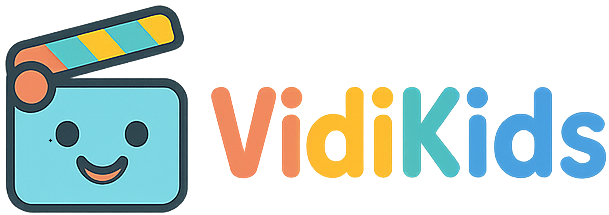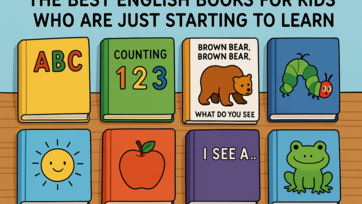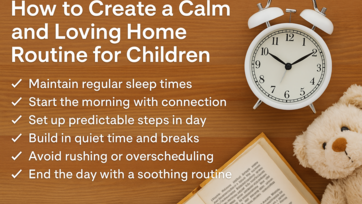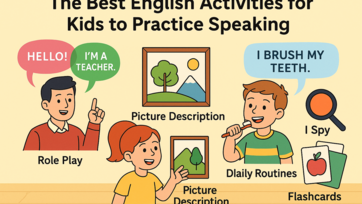Music is one of the most powerful tools for helping children learn a new language. Songs naturally engage young learners by combining rhythm, repetition, and simple vocabulary — all in a way that feels like play, not study. For children between the ages of 3 and 8, music is not just enjoyable, it’s also a gateway to understanding sounds, words, and sentence patterns in English.
In this article, we’ll look at some of the most effective and fun English songs that support language development in children. These songs are easy to use at home or in any informal learning setting and don’t require any special equipment. Just your voice, a device to play music, and a willingness to sing along.

Why Songs Work for Language Learning
Children are naturally drawn to music. The repetitive structure of songs helps them memorize new words and phrases without even realizing it. Songs often include rhyming words and patterns, which makes it easier for young brains to remember them.
In addition, many songs include actions or gestures. These physical movements help children connect words to meaning. Singing also encourages clear pronunciation, listening skills, and even the basics of grammar, all while keeping the learning experience fun and relaxed.
Top English Songs for Young Language Learners
1. If You’re Happy and You Know It
This classic song is ideal for introducing basic action verbs and body movements. It uses simple, repetitive phrases and invites children to participate physically. They clap their hands, stomp their feet, and shout "hurray" — all while practicing English commands.
Key language learned:
-
Action verbs: clap, stomp, shout
-
Listening to instructions
-
Repeating full sentences
This song works particularly well with preschool-aged children and can be adapted with new actions to introduce more vocabulary.
2. Head, Shoulders, Knees and Toes
This song is perfect for teaching body parts. As children touch each part while singing, they quickly connect the English words with the correct parts of their body. The speed of the song can be increased gradually to make it even more fun and challenging.
Key language learned:
-
Vocabulary: head, shoulders, knees, toes, eyes, ears, mouth, nose
-
Word-to-object connection
-
Listening comprehension
Children often enjoy racing through this song at top speed — and they don’t even realize they’re learning while laughing.
3. The Wheels on the Bus
This song tells a story and introduces verbs, nouns, and sound words. It describes what happens on a bus and encourages children to participate with hand motions and sound effects.
Key language learned:
-
Everyday nouns: bus, baby, people
-
Verbs: go, cry, say
-
Sounds and rhythm
You can create new verses depending on your child’s interests: "The cats on the bus go meow meow meow…" — helping expand their vocabulary in a personalized way.
4. Old MacDonald Had a Farm
A great choice for teaching animal names and the sounds they make. Children love imitating animals and singing along with each verse. You can adjust the animals depending on the level of vocabulary or add new animals as they learn more.
Key language learned:
-
Animal names: cow, duck, pig, etc.
-
Animal sounds
-
Sentence pattern: “Old MacDonald had a ___”
This song also reinforces the concept of repetition, which is critical for retention.
5. ABC Song
The ABC song is one of the simplest yet most useful English songs. It introduces the English alphabet in a memorable way, helping children become familiar with letter names and their order.
Key language learned:
-
English alphabet
-
Pronunciation
-
Rhythm and melody
This song is best paired with visual aids such as alphabet cards or posters, so children can connect sounds to written letters.
How to Use These Songs Effectively
Simply playing music in the background may not be enough. The key to learning through songs is active engagement. Here are some ways to make singing part of your learning routine:
-
Sing with gestures: Use hand movements or body actions to emphasize meaning.
-
Repeat often: Repetition helps children internalize words and patterns.
-
Pause and prompt: Stop the song at key words and let the child fill in the blank.
-
Add new verses: Create custom lyrics with your child’s favorite animals, colors, or toys.
-
Combine with visuals: Use flashcards, books, or puppets while singing.
The more involved the child is, the more they absorb — and the more fun they have.
Where to Find These Songs
Most of these songs are available for free on platforms like YouTube, Spotify, and Apple Music. There are also child-friendly channels and playlists designed specifically for English learners. Some examples include:
-
Super Simple Songs
-
Sing Up
-
Bounce Patrol
-
The Kiboomu Kids Music Channel
Be sure to preview content in advance to ensure it matches your learning goals and is appropriate for your child’s age.
What to Watch Out For
Not all songs are equally effective. When choosing songs for language learning, avoid those that:
-
Have overly complex vocabulary or abstract concepts
-
Include fast or unclear pronunciation
-
Use regional slang that might confuse beginners
Stick to songs with clear, slow speech, strong rhythm, and obvious visual or physical connections.
Final Thoughts
English songs can transform language learning into a joyful, shared experience. They combine sound, movement, and memory in a way that’s perfectly suited to how young children learn. Best of all, they’re free, simple to use, and can be part of daily routines — from getting dressed in the morning to winding down at bedtime.
Whether you’re working with a single child or a group, songs are a gateway to vocabulary, grammar, and most importantly, confidence. The more your child hears and uses English in a natural, playful setting, the faster it becomes part of their everyday understanding.
So press play, sing along, and let the language learning begin — one verse at a time.
; ?>







